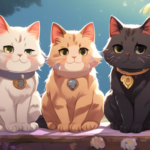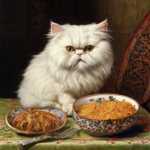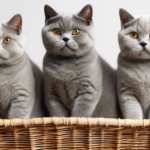## Introduction
Torbie cats, a delightful mix of tortoiseshell and tabby patterns, are captivating feline companions that have gained popularity among cat enthusiasts. This unique combination creates a mesmerizing coat pattern that sets torbies apart from other cats. In this article, we will explore the characteristics, genetics, and appeal of torbie cats, as well as their rarity and distinctive variations.
What are Tortoiseshell Cats?
Tortoiseshell cats, named for their resemblance to the shell of a tortoise, exhibit a beautiful coat pattern consisting of two colors other than white. These colors can range from shades of orange, red, yellow, or cream, paired with dark brown or black fur. Unlike other coat patterns, tortoiseshell cats are predominantly female, as the genes responsible for this pattern are located on the X chromosome. Male tortoiseshell cats are a rarity and often sterile, resulting from chromosome aberrations and possessing an extra X chromosome (XXY).
The Allure of Tabby Cats
Tabby cats, known for their distinctive markings, are one of the most common fur patterns found in mixed breed domestic cats. These charming felines exhibit a dark “M” marking on their forehead, “eyeliner” around the eyes, thin pencil strokes on the face, and banding around the legs and tail. The Agouti gene determines whether a cat has a tabby pattern or not. The dominant allele (A) results in a tabby pattern, while the recessive allele (a) leads to a solid color coat.
The Enchanting Blend: Torbie Cats
Torbie cats, also referred to as “reverse calicos” or “patched tabbies,” combine the characteristics of both tortoiseshell and tabby patterns. The name “torbie” is a concatenation of these two words. Inherited genes contribute to the development of torbie cats, who possess the markings of a tabby cat along with patches of another color that form the tortoiseshell pattern. The end result is a striped or marbled cat with patches of a secondary color, typically orange or cream for dilute torbies.
The Rarity of Male Torbies
As with tortoiseshell cats, torbies are predominantly female. Male torbie cats are exceptionally rare and often referred to as “unicorn cats.” Estimates suggest that the chance of a torbie being male ranges from 1 in 3,000 to 1 in 10,000. The unique genetic makeup required to produce the torbie pattern makes it highly unlikely for males to exhibit this coat variation.
Popularity and Appeal
Torbie cats have gained popularity among cat enthusiasts due to their captivating coat patterns. A study published in the Journal of Applied Animal Welfare Science found that torbies had the shortest average length of stay at a no-kill animal shelter, indicating their appeal to potential adopters. This finding suggests that torbies’ distinct appearance and charm contribute to their desirability as companions.
Delving into Dilute Torbies
Dilute torbies exhibit a lighter or “washed out” version of the torbie pattern. The Dilute gene, represented by the alleles D (Dense) and d (Dilute), determines the intensity of the coat color. When a cat inherits the Dilute (d) allele from both parents, the coat color becomes diluted. Black fur changes to a smoky gray shade known as blue, while red fur transforms into cream. Dilute torbies retain the tabby markings but with less intense fur coat colors.
The Rarity of Torbie Cats
Torbie cats, with their unique blend of tortoiseshell and tabby patterns, are less common compared to their straightforward tortoiseshell and tabby counterparts. The recessive nature of the dilute gene further adds to their rarity, making dilute torbies even more infrequently encountered in the feline world. The distinctive appearance and scarcity of torbie cats contribute to their allure and desirability among cat enthusiasts.
Conclusion
Torbie cats, with their captivating blend of tortoiseshell and tabby patterns, have become increasingly popular among cat lovers. These mesmerizing felines exhibit a unique coat pattern that sets them apart from other cats. The rarity of male torbies and the dilute variations further add to their charm. Whether you are captivated by their striking appearance or drawn to their elusive nature, torbie cats are a fascinating addition to the world of feline companionship.
References
- Brown, W. P., & Morgan, K. T. (2015). Age, breed designation, coat color, and coat pattern influenced the length of stay of cats at a no-kill shelter. Journal of Applied Animal Welfare Science, 18(2), 169-180. DOI: 10.1080/10888705.2014.971156
- Pedersen, A. S., Berg, L. C., Almstrup, K., & Thomsen, P. D. (2014). A tortoiseshell male cat: chromosome analysis and histologic examination of the testis. Cytogenetic and genome research, 142(2), 107-111. DOI: 10.1159/000356466







1 thought on “The Fascinating World of Torbie Cats: A Blend of Tortoiseshell and Tabby Patterns”